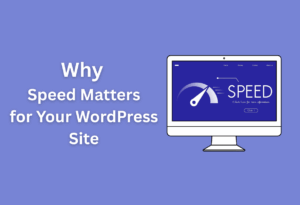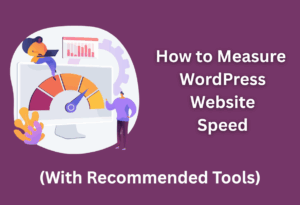Just like any sophisticated tool, your WordPress site needs regular fine-tuning to perform at its best. Optimizing your WordPress database can significantly enhance your website’s speed and efficiency, ultimately providing a better user experience. In this guide, you will learn practical steps to clean up your database, eliminate bloat, and improve performance. By following these techniques, you can ensure that your site runs smoothly, helping you retain visitors and boost engagement.
Understanding the WordPress Database
To fully grasp how to optimize your WordPress database, it’s vital to understand what it encompasses and why it matters. The WordPress database is a collection of structured data stored in a MySQL database format, which holds all your website’s content, such as posts, pages, comments, and user information. This data is vital for the dynamic functionality of your site, allowing it to serve content quickly and efficiently to your visitors.
What is a WordPress Database?
Any WordPress site operates through a database that stores all the vital information your website needs. This includes not just posts and pages, but also settings, plugin configurations, and user data, all organized in tables for quick access and management by the WordPress software.
Importance of Database Optimization
The performance of your WordPress site is closely tied to how effectively your database operates. A well-optimized database speeds up queries, reduces the load on your server, and ultimately enhances the user experience. Ignoring database optimization can lead to slow load times, decreased performance, and even downtime, affecting not only your site’s usability but also its SEO rankings.
To maintain high performance, regularly optimizing your database is vital. Over time, as you add content and plugins, your database can become bloated with unnecessary data such as post revisions, spam comments, and transient options. This can lead to slower query responses and hinder overall site performance. By periodically cleaning up and optimizing your database, you ensure that your WordPress site remains fast and efficient, providing a better experience for your visitors.
Common Database-related Issues
Any WordPress site owner may encounter issues related to database performance at some point. Common problems include slow loading times, frequent database errors, or even site crashes due to excessive bloat or corrupted tables. These issues can stem from various factors, such as poorly coded plugins, excessive post revisions, or accumulated spam comments.
Issues like these often arise when the database is overwhelmed with unnecessary data, leading to inefficiencies in how your site processes requests. A cluttered database not only strains server resources but can also result in your website failing to respond properly to user queries. Addressing these problems through regular maintenance and optimization will help keep your WordPress site running smoothly and efficiently.
Factors Affecting Database Performance
Even minor changes in your WordPress setup can significantly impact your database performance. Understanding the various factors at play will help you identify areas for improvement. Some of these factors include:
- Size of the Database
- Number of Queries
- Database Server Configuration
Any adjustment you make can lead to enhanced performance, resulting in a better experience for your visitors.
Size of the Database
An oversized database can slow down your website considerably. Each additional record or entry not only consumes storage but also requires more time to retrieve data during queries. Regularly auditing and cleaning up your database can minimize its size, thereby improving performance.
Number of Queries
Size often isn’t the only issue; the frequency of database queries plays a significant role as well. Each time a user interacts with your site, a query is generated to fetch the necessary data. If your site receives heavy traffic, this can lead to database overload.
For instance, a WordPress site with numerous plugins can generate excessive queries each time a page is accessed. Optimizing these queries and minimizing unnecessary requests can greatly enhance your site’s speed and responsiveness.
Database Server Configuration
With the right server configuration, your database can operate more efficiently. Proper settings can help manage how resources are allocated and how requests are processed, ultimately boosting performance.
Database configurations like caching, indexing, and adjusting memory limits significantly influence how quickly your database responds to queries. If your server isn’t optimized, even a well-designed database can underperform, leading to slower page load times and a less engaging user experience.
How to Optimize Your WordPress Database
All WordPress websites require a clean and streamlined database to function efficiently. By regularly optimizing your database, you can significantly enhance the performance of your site. Below are some effective strategies to ensure your WordPress database remains in top shape.
Regularly Cleaning Up Database
Database cleanup is crucial to remove unnecessary data such as post revisions, spam comments, and transient options. By routinely purging this excess information, you can free up space and improve the speed of your database queries, resulting in a more responsive website.
Removing Unused Plugins and Themes
There’s a tendency to accumulate unused plugins and themes over time, which can bloat your database. Each inactive plugin or theme not only consumes storage but also may create unnecessary overhead during database queries.
Themes and plugins can leave behind orphaned data even after deactivation. It’s advisable to regularly review your installed themes and plugins, removing any that you no longer use. This action helps avoid conflicts, reduces clutter, and expedites database interactions, ultimately enhancing your site’s performance.
Optimizing Database Tables
Optimize your database tables by regularly running maintenance tasks. This includes actions like checking for overhead and repairing corrupted tables, which can hinder performance and slow down your site.
Regularly optimizing your database tables through tools such as phpMyAdmin or WordPress plugins will help maintain efficiency. These practices help to refresh your database, ensuring that it operates smoothly and efficiently, without unnecessary strain from outdated or inefficient structures.
Tips for Manual Database Optimization
Once again, optimizing your WordPress database manually can significantly enhance your website’s performance. Here are some effective tips to consider:
- Remove unused plugins and themes to lighten the database load.
- Clean up post revisions and drafts to free up space.
- Delete any spam or unapproved comments to improve database efficiency.
- Regularly optimize database tables to improve query performance.
- Limit user permissions to reduce unnecessary data entries.
Recognizing the importance of these practices can make a notable difference in your site’s speed and responsiveness.
Using phpMyAdmin for Database Management
The phpMyAdmin tool provides you with an intuitive interface to manage your WordPress database. By accessing your database through phpMyAdmin, you can easily perform a variety of tasks, including optimizing tables, running SQL queries, and backing up your data. This user-friendly tool simplifies the database management process, allowing you to focus more on your website’s content and performance.
Performing SQL Queries for Optimization
phpMyAdmin enables you to execute SQL queries that can optimize your database. Using simple SQL commands, you can delete redundant data, optimize tables, and even restore database efficiency quickly.
Another key benefit of performing SQL queries is that they can automate many optimization tasks. For example, you might run a query to delete old post revisions or clear out transient options that slow down your database. By leveraging the power of SQL, you can streamline your database maintenance and create a faster experience for your users.
Backing Up Before Making Changes
The first step in any database optimization process should be to back up your data. This ensures that you have a safety net in case something goes wrong while performing optimizations or deletions in your WordPress database.
Database backups are vital because they allow you to restore your site to its previous state if any issues arise during manual optimization. Whether you choose to use a plugin or handle it via phpMyAdmin, having a reliable backup will give you peace of mind as you work on enhancing your site’s performance.
Utilizing WordPress Plugins for Database Optimization
Despite the importance of maintaining your WordPress database, many users overlook the power of plugins designed specifically for optimization. These tools can significantly improve your site’s performance by streamlining and cleaning up the database, ensuring that it runs efficiently. By implementing the right database optimization plugins, you can make a noticeable difference in your website’s loading times and overall functionality.
Best Plugins for Database Optimization
Database optimization plugins such as WP-Optimize, WP-Sweep, and Advanced Database Cleaner provide users with user-friendly interfaces to help you clean up unnecessary data. They can automatically remove post revisions, spam comments, and transient options, making it easier for you to keep your database tidy and fast.
How to Configure Optimization Plugins
Even if you are not tech-savvy, configuring optimization plugins is straightforward. Most plugins guide you through the setup process, allowing you to choose what types of data you want to clean and how frequently you want optimizations to occur. It’s important to familiarize yourself with the options presented to ensure you are optimizing your database effectively.
With several settings and features available in each plugin, you may want to take your time to configure them according to your specific needs. Start by running a manual optimization to see the results. Then, check the plugin settings to enable automatic cleanups, set the frequency of these cleanups, and decide which types of data you want to include or exclude. Adjusting these settings correctly will lead to optimal performance and a streamlined database experience.
Scheduling Automatic Cleanups with Plugins
Optimization becomes even easier when you can schedule automatic cleanups with your chosen plugins. This feature allows you to set specific intervals at which the plugin will clean and optimize your database without manual intervention, helping you maintain a consistently well-performing website.
Configure the cleanup schedules based on your site’s traffic and data usage. If your website publishes a lot of content frequently, shorter intervals may be beneficial. On the other hand, if your site is less active, you might choose longer intervals. Establishing a routine cleanup schedule ensures that your database remains optimized, allowing you to focus on creating content and engaging with your audience without worrying about performance issues.
Monitoring Database Performance
Unlike many other aspects of your website, database performance often flies under the radar until issues arise. By regularly monitoring your database, you can preemptively identify potential problems and optimize its efficiency, ensuring a seamless experience for your users.
Tools for Tracking Database Performance
Monitoring database performance can be effectively managed with various tools designed for tracking metrics and usage patterns. Tools like Query Monitor, New Relic, and WP Performance Advisor allow you to see real-time data on your database activities. These tools can help you pinpoint issues and assess performance improvements after optimizations.
Analyzing Database Performance Metrics
Clearly, understanding the metrics that affect your database performance is key to making informed decisions. Metrics such as query execution time, slow query count, and lock wait times provide valuable insight into your database’s health and efficiency. With these metrics, you can prioritize areas needing attention and action.
Performance metrics allow you to visualize how well your database responds to queries. Consider using graphical representations of these metrics to track changes over time. A focus on metrics such as query response times and resource usage can help you build a performance baseline and guide future optimization efforts.
Identifying Slow Queries
Performance issues are often traced back to slow queries that can drag down your entire database’s efficiency. By identifying and analyzing these slow queries, you can take actionable steps to optimize them, enhancing overall performance. Regular checks for these sluggish operations are necessary for a responsive database.
Slow queries can arise from inadequate indexing, poorly written SQL, or excessive joins. Identifying these queries involves evaluating execution time and using tools that highlight problematic queries. Once recognized, you can refine your SQL statements, add indexes, or restructure your database schema to improve their speed and efficiency.
Conclusion
Now that you understand how to optimize your WordPress database, you can significantly improve your website’s performance. Regularly perform tasks such as cleaning up unnecessary data, using efficient plugins, and implementing caching solutions. By prioritizing these actions, you enhance your site’s speed and responsiveness, ultimately providing a better experience for your visitors. With consistent maintenance, your WordPress database will run smoothly, allowing you to focus on creating content and growing your online presence.





